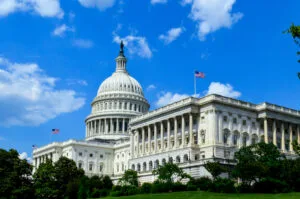Physician-assisted suicide (PAS) proponents have argued that legalizing PAS will lead to a reduction in suicides. However, a recent study published in the Southern Medical Journal (10-10-2015) examining the association between the legalization of assisted suicide and state-level suicide rates in the United States between 1990 and 2013, does not confirm that. The study’s authors summarize: “The introduction of PAS seemingly induces more self-inflicted deaths than it inhibits.” When the study controlled for state-and year-fixed effects, PAS is associated with an 8.9 percent increase in total suicide rates. When controlled for demographic and socioeconomic factors, PAS is estimated to increase rates by 11.8 percent.
Smith explains, “Behaviors like suicide, whether assisted or non-assisted, influence the behaviors of not only one’s friends, but also of one’s friends’ friends’ friends. No man is an island. Laws shape the ethos of a culture by affecting cultural attitudes toward certain behaviors and influencing moral norms. In other words, the law is a teacher.”
CNN poll: Americans more pro-life
A CNN poll taken in mid-August shows Americans are becoming more pro-life, with 58 percent opposing all or almost all abortions. The poll found that 18 percent of respondents said abortion should be illegal. Forty percent believe abortion should be legal in “a few cases.”
Comparing the mid-August poll with a poll a month earlier revealed an increase in the percentage of Americans who said abortion should be legal in only a few circumstances — from 37 percent to 40 percent. There was a drop in those who said abortion should be legal in all circumstances — from 30 percent to 26 percent.
Traditionally, polls have shown that more pro-lifers see abortion as “an important issue” than do abortion supporters. Election analyses show pro-life candidates gain an advantage from this pro-life increment.
British Parliament defeats assisted suicide bill
In mid-September, the British Parliament, by a vote of 330 to 118, overwhelmingly defeated a bill that would have legalized some assisted suicides. LIFE spokesperson Mark Bhagwandin praised the vote saying, “We commend the MPs who, despite enormous pressure, have voted to protect the sick, disabled and elderly in society who would have been placed at risk had this bill been successful. Today, Parliament remembered its duty to protect the vulnerable.”
Paul Tully of the Society for the Protection of Unborn Children, explained, “This was a vote for true compassion. The ideologues of euthanasia will continue to press for the right to demand death regardless of the consequences. We must remain vigilant against this threat.” Tully pointed to the importance of effective palliative care saying, “The challenge we face as a society is to ensure that in the future those affected by serious and limiting conditions are not left feeling desperate for lack of proper living support.”
Breast cancer risk quadruples since abortion legalized
“Hush,” an in-depth documentary exploring the long-term health and emotional risks of abortion, premiered in October at the LA Femme International Film Festival in Beverly Hills. Pro-choice director, Punam Kumar Gill, says in the trailer, “When I heard claims that there were long-term physical and psychological problems associated with abortion, my initial reaction was to take offense. What were women actually being told before their abortions? How were these women actually doing afterwards? My health and life could be at risk.”
The film features experts who have long warned of abortion’s dangers, including Breast Cancer Prevention Institute co-founders Joel Brind, Ph.D. and Angela Lanfranchi, M.D., as well as Priscilla Coleman, Ph.D.
Between 1970 and 2014, the probability of U.S. women contracting breast cancer more than quadrupled. In 2014, Breast cancer accounted for more new cancers than the next three most common cancers combined, according to a medically reviewed study by professors from St. Joseph’s Hospital (Lexington, Ky.), University of Kentucky Medical Center and University of North Carolina (Chapel Hill).
Despite pro-choice denials of the link between abortion and breast cancer (the ABC link), 58 of the 74 epidemiological studies conducted since 1957 have demonstrated as much as a 10 percent increased risk of breast cancer following an abortion.
Dr. Lanfranchi explains that a woman who has an abortion increases her risk of breast cancer in four ways, saying, “She creates in her breasts more places for cancers to start, which is an ‘independent effect’; she loses the protective effect that a full-term pregnancy would have afforded her; she increases the risk of premature delivery of future pregnancies; and she lengthens her susceptibility window.”
RU 486 marks 15th anniversary
The Food and Drug Administration (FDA) approved the chemical abortion drug RU 486 fifteen years ago. Since then, millions of babies have lost their lives to this medical “innovation” and the FDA has been flooded with “adverse event reports” from women, including hemorrhaging, infections and ruptured ectopic pregnancies. There have been 14 known deaths in the U.S. and at least five more in other countries.
Chemical abortions represent nearly a quarter (22.6%) of all U.S. abortions, having grown steadily from about 70,500 in 2001 to 239,400 in 2011. U.S. News & World Report (9/15/15) put the number of American women who have used RU 486 at two million.
The abortion industry has tried to make the process easier, not for the mother, but for clinics, by tinkering with the dosage and eliminating the protocol of a second visit to the clinic. This allowed Planned Parenthood to offer chemical abortions at many of their smaller, more lightly staffed clinics. The abortion giant then pioneered the “web cam” abortion linking the abortionist with the patient via computer. The abortionist releases a locked drawer containing the pills at the woman’s location. The doctor never physically examines her. Additionally, California has authorized nurses, midwives and physician assistants to perform chemical and surgical abortions.
China tweaks one-child policy
China recently announced that it is “ending” its pro-abortion one-child policy that began in 1980. The brutal policy has resulted in 13 million abortions per year (1,500 each hour), disproportionately among unborn girl babies. The policy has caused severe human rights abuses including forced abortions, sex-selection abortions, house arrests and labor camps, loss of jobs and government support, and targeted harassment or violence against family members. The birth ratio of more than 120 boys for every 100 girls has created a “bachelor society of men,” resulting in more crime, prostitution, sex trafficking, and other societal problems. The new policy, which will allow two children per family, will commence in March 2016.
China’s policy change does not indicate a change of heart toward abortion. The 1980 one-child policy was instituted for demographic reasons (overpopulation concerns) and is being changed for demographic reasons (low fertility rates threaten a labor shortage).
Human rights activist Reggie Littlejohn explains, “Instituting a policy change will not end forced abortion, gendercide, or family planning regulations in China. Couples will still have to have a birth permit for the first and the second child, or they may be subject to forced abortion. The core of the one-child policy is not the number of children the government allows. It’s the fact that the government is setting a limit on the number of children, and enforcing this limit coercively. That will not change under a two-child policy. The one-child policy does not need to be modified. It needs to be abolished. We need to keep up the pressure until China abandons all coercive population control.”
Coercive abortion practice is a major reason why China has the highest rate of female suicide in the world. New Jersey Congressman Chris Smith argues that “no other government policy anywhere else in the world systematically punishes, abuses, and violates women so grossly as this.”
[www.lifenews.com/2015/10/29/china-not-ending-human-rights-abuses-forced-abortions-will-continue-under-two-child-policy;www.womensrightswithoutfrontiers.org]




